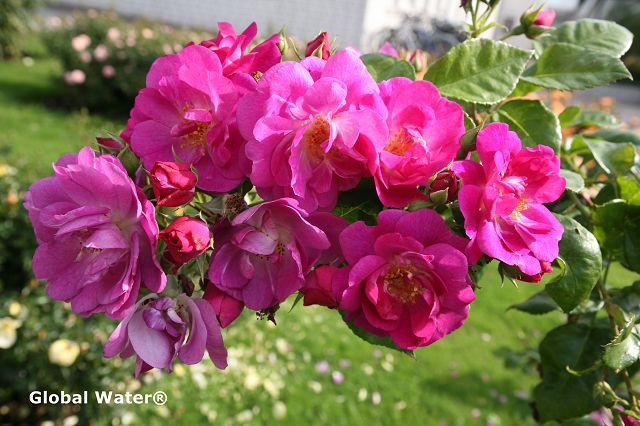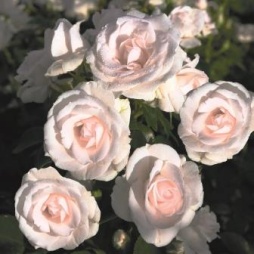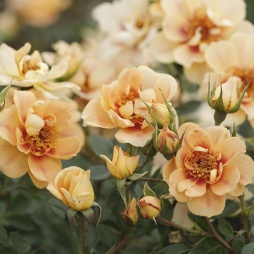


...are up to the challenges of climate change.
Our PrimaKlima™ roses are the answer to tighter water supplies, freak weather and rising temperatures! These varieties tolerate heat very well, can withstand longer periods of drought or can also cope with heavy rainfall events.
Climbing roses as facade greenery lower the temperature, improve the air and insects and birds find a cherished shelter.
Even after a short period of around two years (assuming the roses are well rooted), it is unlikely that a rose plant will die in a summer drought. The taproots of roses reach a meter deep, occasionally even considerably deeper. This means that roses still reach soil zones that carry water when the surface is already dry. Only in extreme drought conditions can your beauties be watered thoroughly every two or three weeks. By the way: in our fields, our roses receive no additional water at all... Roses are therefore among the most reliable garden plants and take the current challenges presented by weather and climate quite calmly. . ...it can happen, but the plant itself is hardly damaged. The optimal temperatures at which roses fully develop their flowers are between 22 and 26° C. From 30° C onwards, some varieties bloom more quickly, but in persistent heat they usually produce smaller and paler flowers. If it gets even hotter, growth may stop until the hot period is over - but then it will continue as usual. The petals make the difference: the firmer, more leathery these petals are, the less water is lost through evaporation. Varieties with firm petals are not only well prepared for summer heat, they can also withstand heavy rain events.










